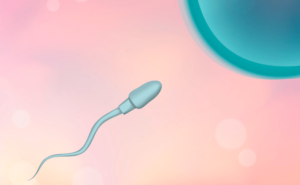Summary of this article
Characteristics of having twins are associated with older childbirth and the use of fertility drugs for fertility treatment. The use of fertility drugs due to an older birth or infertility treatment increases the likelihood of twins. Twins can be determined by ultrasound (ultrasound) imaging, which can be done from around the fifth week of pregnancy. Multiples have a high probability of being low-birth-weight foetuses, approximately 70% or more. There is also an increased risk of premature birth and other risks associated with growing twins.
- Status of multiple pregnancies such as twins and triplets in Japan
- Are there any characteristics of people who have twins?
- Mechanisms for conceiving twins
- When do you know if you are having twins?
- What happens to the belly in twins?
- What happens to twin foetuses in the abdomen?
- What are the chances of twins having a disability?
- What are the chances of twins being born safely?
- If you are pregnant with twins, have a NIPT
- Summary
Status of multiple pregnancies such as twins and triplets in Japan
A ‘multiple pregnancy’ is when you are pregnant with more than one baby at the same time, such as two or three. On the other hand, a ‘singleton pregnancy’ is when there is only one baby in the belly.
Multiple pregnancies in Japan have not increased or decreased much in recent years and have remained at around 1%. The number of deliveries of multiple births in 2017 was approximately 9,900.
The multiple pregnancy rate in relation to the total number of deliveries is as follows.
| 1995 | 0.9% |
|---|---|
| 2005 | 1.18% |
| 2011 | 0.96% |
| 2017 | 1.04% |
Are there any characteristics of people who have twins?
Are older births more likely to result in twins?
It is thought that the rate of multiple births increases as the mother’s age at birth increases. One reason for this is that older mothers tend to have higher levels of follicle-stimulating hormone, which increases the likelihood of multiple fertilised eggs.
The proportion of multiple pregnancies in Japan is over 2.0% for mothers aged 30 and over, 2.71% for those aged 40-44 and gradually increases to 5.95% for those aged 45 and over. Therefore, it can be said that the probability of having twins increases in older births.
Does fertility treatment make it easier to have twins?
When treating infertility, a drug called Clomid may be used to induce ovulation, for example, if there is a problem with ovulation. When fertility drugs are used, more than one egg may be released at a time, and if each of the multiple eggs fertilises and implants itself, the woman will have twins. This means that the use of fertility drugs during fertility treatment increases the chances of having twins.
Also, in IVF, two or more fertilised eggs may be implanted in the uterus, which also increases the probability of conceiving twins or triplets.
In recent years, as fertility treatments have become more widespread, the proportion of people giving birth to twins has been on the rise worldwide.
引用:厚生労働省 – 多胎児支援のポイント
Is genetics relevant?
Are there any genetic traits in people who have twins?
There are two types of twins: identical twins and dizygotic twins.
Identical twins are thought to occur by chance and are not considered to be inherited, as there are no differences in their occurrence due to racial or other differences.
On the other hand, the birth of dizygotic twins may be due to the mechanism of maternal ovulation and is considered to be related to heredity.

Does the frequency of twin pregnancies vary by race?
Since the birth of identical twins occurs by chance, there is no difference in frequency according to race.
On the other hand, the proportion of identical twins born varies according to race, with blacks having the highest frequency, followed by whites and yellows having the lowest (although there are reports that the frequency of twin births according to race has changed due to fertility treatments that have become more widespread in recent years).
From this it can be inferred that genetics is involved in the birth of fraternal twins.
Is it true that after a miscarriage it is easier to conceive twins?
When a woman becomes pregnant, trophoblast cells, which produce the placenta, are formed in the uterus. After a miscarriage, the trophoblast cells must be cleared from the uterus or there is a risk of a reduced pregnancy rate.
However, it has not been medically confirmed that the loss of trophoblast cells results in a higher pregnancy rate than before the miscarriage.
If there are no remaining trophoblasts in the uterus after a miscarriage and hormonal status has returned to normal, the chances of pregnancy will be almost the same as before the miscarriage. Regardless of whether it is twins or not, there is no medical evidence to support the story that miscarriage makes it easier to conceive because the inside of the uterus is cleaner.
It can be said that age has a greater effect on the probability of pregnancy than whether or not a woman has had a miscarriage.
Mechanisms for conceiving twins
What are monozygotic and hermaphroditic?
Monozygotic means that one egg is fertilised by one sperm, which then grows in two separate fertilised eggs. As a result, the genetic information will be almost identical and the blood group and sexes will be the same.
Hermaphroditism is the development of two fertilised eggs, each fertilised by a different sperm. As a result, the genetic information is different and the relationship is the same as that of siblings. Approximately 50 per cent of the genetic information is equal, but blood groups and male and female genders may differ.
Probability of natural conception of identical twins
Identical twins have almost identical genetic information,
- Same blood type and gender
- They are very similar in appearance and personality
above are some of the characteristics.
The probability of conceiving identical twins naturally is about 0.3-0.4%.
Causes of identical twins
Whether you have identical or fraternal twins depends on whether the original fertilised egg was one or two.
Identical twins happen because they were originally one fertilised egg, which means that they have the same genetic information and are almost identical in gender, appearance and personality.
Are identical twins genetically identical?
For a long time, it was believed that identical twins had 100% identical genetic information. It was assumed that differences in personality and other characteristics were due to environmental differences, such as ‘which one is the eldest and which one is the second son’.
However, recent research has shown that the genetic information carried by identical twins is not always 100% identical. It has become clear that when mutations occur in the early developmental stages, the genetic information of the twins is no longer identical.
A research paper published by a research team at the University of Alabama, USA, in February 2008, and a paper by a research team at Decode Genetics in Iceland in January 2021, confirm this.
By analysing the whole genome to determine ‘which mutations are expressed in which twins and which of these are inherited by the offspring’, the Decode Genetics team looked at the ‘mosaic phenomenon’ and found that the mutations were expressed before the fertilised egg was split into two.
Although the study of identical twins has played an important role in genetics, little was known about their genomic differences. However, as further research progresses, the many wonders of twins will gradually be unravelled.
Probability of natural conception of fraternal twins
Hermaphroditic twins have different genetic information in each,
- Blood group and gender may differ
- Appearance and personality are not as identical as identicals
above are some of the characteristics of this type of twins. The chances of conceiving fraternal twins naturally are slightly higher than with monozygotic twins, at around 1%.
Causes of dizygotic twins
In normal ovulation, one egg is released from either the left or right ovary. However, for some reason, two eggs may be expelled, one from each side or from either ovary, and when the two eggs meet and are fertilised by different sperm, two fertilised eggs are formed. Each then grows safely in the womb, resulting in the birth of hermaphroditic twins.
When do you know if you are having twins?
When will it be known whether the child being conceived is a twin?
Pregnancy tests cannot tell if you are having twins, and there are no specific signs of twin pregnancy, so a twin pregnancy can only be diagnosed in hospital.
The time at which a twin pregnancy can be diagnosed by hospital tests differs between monozygotic and dizygotic pregnancies.
In the case of hermaphroditism, the pregnancy can be confirmed by ultrasound imaging from around the fifth week of pregnancy, as each is in a different foetal sac.
On the other hand, in the case of monozygotic cases, the two may be contained together in one foetal sac, which cannot be confirmed by ultrasound examination in the early stages of pregnancy. Around the sixth week of pregnancy, the heartbeats of the foetus start to be heard, and it can be determined whether the heartbeats are for one or two babies to determine whether they are twins or not.
What happens to the belly in twins?
Because there are two foetuses in the belly, the belly during pregnancy with twins tends to be larger than when pregnant with only one foetus.
With a singleton pregnancy, there may be no change in the size of the belly, so much so that some people may not even notice that they are pregnant, even in the second trimester (from 5 months’ gestation). However, with twins, the belly often grows to the point where it is clearly recognisable as ‘pregnant’, and people may be surprised at how big the belly is for a five-month pregnancy.
In the case of a singleton pregnancy, it is around the eighth month of pregnancy that you start to realise that you are finally getting bigger, but in the eighth month of pregnancy with twins, they are often already as big as the last month of pregnancy.
You may struggle to hold your big tummies when sitting in a narrow seat on an aeroplane or when sleeping at night.
What happens to twin foetuses in the abdomen?
The condition of twin foetuses in the abdomen can be divided into three main categories, depending on the condition of the placenta (chorionic villi) and the amniotic membrane that surrounds the foetus.
- DD twins (2 chorionic 2 amniotic twins):Both placenta and amnion are divided into two parts
- MD twins (1 chorionic 2 amniotic twins):Only one placenta, but with two separate amniotic membranes
- MM twins (one chorionic and one amniotic twin):Both placenta and amnion have only one placenta and one amnion
The most common is DD twins (two placentas and two amniotic membranes), which are found in fraternal twins. In monozygotic twins, the most common condition is MD twins (one placenta and two amniotic membranes); MM twins are very rare, occurring in less than 1% of twin pregnancies.
Not only twins, but also babies in the abdomen are in a cephalic position, with their heads downwards as they grow. Even in the case of twins, both babies are in the normal head position, but only one may be in a breech position, with the head coming up, or facing sideways. For this reason, caesarean sections are often chosen when pregnant with twins, and the proportion of women who give birth naturally is lower than with singleton pregnancies.
What are the chances of twins having a disability?
A common complication of twin pregnancies is intrauterine foetal growth retardation. Intrauterine foetal growth retardation is a condition in which the foetus does not receive adequate nutrition and its growth is delayed. In twins, the nutrition coming from the mother is shared between the two, and the babies tend to weigh less than if they were conceived as a single baby. Nutrition may also be more biased towards one of the babies.
The percentage of low birthweight babies in 2017 was as follows.
- Single births: 8.17%.
- Multiple births: 71.65%
The probability of having a low-birthweight baby in two or more pregnancies is found to be very high.
The probability of having a low-birthweight baby in two or more pregnancies is found to be very high. However, there is no significant difference in postnatal development between single and multiple births.
Babies born with low birth weight often catch up to the average around the age of 3-6 years, so there is no need to be overly concerned.
Identical or fraternal, who is more likely to have the disorder?
Comparing the risk of both, identical twins have a higher probability of having a disability. This is because identical twins, when they were MD and MM twins as described above, may share one placenta between them, which can lead to an unbalanced nutritional supply to the foetus.
This may be due to the different placental areas occupied by the two, the entanglement of the umbilical cord and the anastomosis of each other’s blood vessels.
In MD and MM twins, the prevalence of congenital diseases is also higher than in singletons, so a thorough examination is important.
What is vanishing twin?
Vanishing twinning, also known as ‘single twin death’, is a phenomenon in which one of the twins dies in the early stages of pregnancy and is absorbed into the mother’s womb, where it appears to have disappeared. It is reported to occur in about 10-15% of twin pregnancies.
The mechanism by which the foetus is absorbed is not known. However, it is thought that the most common cause of vanishing twins is a chromosomal abnormality in the foetus. When vanishing twinning occurs, the surviving one foetus is not believed to be significantly affected, but in rare cases, a parasitic twin may occur, where the deceased foetus is not absorbed by the mother and is conjoined to the remaining child.
What are the chances of twins being born safely?
Multiple pregnancies are associated with various increased risks compared to singleton pregnancies.
Specifically, these are the following risks.
- Premature birth
- Gestational hypertension syndrome
- Gestational diabetes
- Intrauterine fetal death
- Fetal growth failure
- Thrombosis, etc.
The likelihood of preterm birth is particularly high, at 4.7% for singleton pregnancies compared with 50.8% for multiple pregnancies. Although the stillbirth rate is decreasing, data show that it is twice as high when compared to singleton pregnancies.
Particularly when two people are sharing one placenta, there is a risk of unbalanced nutrition and circulation, and cord entanglement, which can lead to complications such as heart failure, low birth weight and, in the worst case scenario, the death of the foetus.
There is no need to be overly concerned about the risks, but it is advisable not to neglect regular check-ups and to take measures such as choosing a hospital that can cope with premature birth and emergency surgery.

If you are pregnant with twins, have a NIPT
Twins, especially identical twins, also have a higher chance of having congenital diseases. Prenatal diagnosis can be used to check for foetal diseases before birth, if necessary.
In particular, NIPT can test for the presence or absence of chromosomal abnormalities in the foetus using only blood samples taken from the mother immediately after the pregnancy is confirmed by ultrasound examination.
However, it should be noted that not all hospitals and clinics currently offer NIPT for twins.
What is NIPT?
NIPT is a prenatal diagnosis in which the mother’s blood is used to test for chromosomal abnormalities in the baby. Although it is a non-confirmatory diagnosis, the test is highly accurate and 21 trisomy (Down syndrome) can be determined with a sensitivity of 99.9% and specificity of 99.90%.
Another advantage is that the test requires only a blood sample, so there is no risk of miscarriage or stillbirth.
Hiro Clinic NIPT‘s NIPT can test for all-chromosome heterozygosity and all-autosomal full-domain partial deletions and duplications in twins as well.
NIPT at Hiro Clinic NIPT can also determine the sex of the foetus. However, in the case of twins, it is determined whether or not the Y chromosome is present, so it is possible to tell whether ‘both girls’ or ‘one of them is a boy’ or ‘both are boys’.
Summary
Although the number of people having twins is said to be increasing as a result of fertility treatment, it is of course possible to have twins in natural pregnancies.
Having twins is more fun as you can welcome two babies at once, but it also tends to increase the risks during pregnancy and the burden of childcare.
If you have twins, it is important to choose a hospital where you can have a safe delivery and try to make your pregnancy less stressful.
Also, if you are worried or concerned about the babies in your belly, consider prenatal diagnosis, including NIPT.
【References】
- Ministry of Health, Labour and Welfare – Key points on support for multiple births
- Asahi Shimbun ‘NONO-chan’s DO Science’ – How do twins grow up in the belly?
- National Centre for Child Health and Development – Outpatient clinic for multiple pregnancies
- Newsweek Japan – ‘Identical twins do not have identical genetic information’
Article Editorial Supervisor

Dr Hiroshi Oka
NIPT specialist clinic, MD
Graduated from Keio University, School of Medicine
 中文
中文























